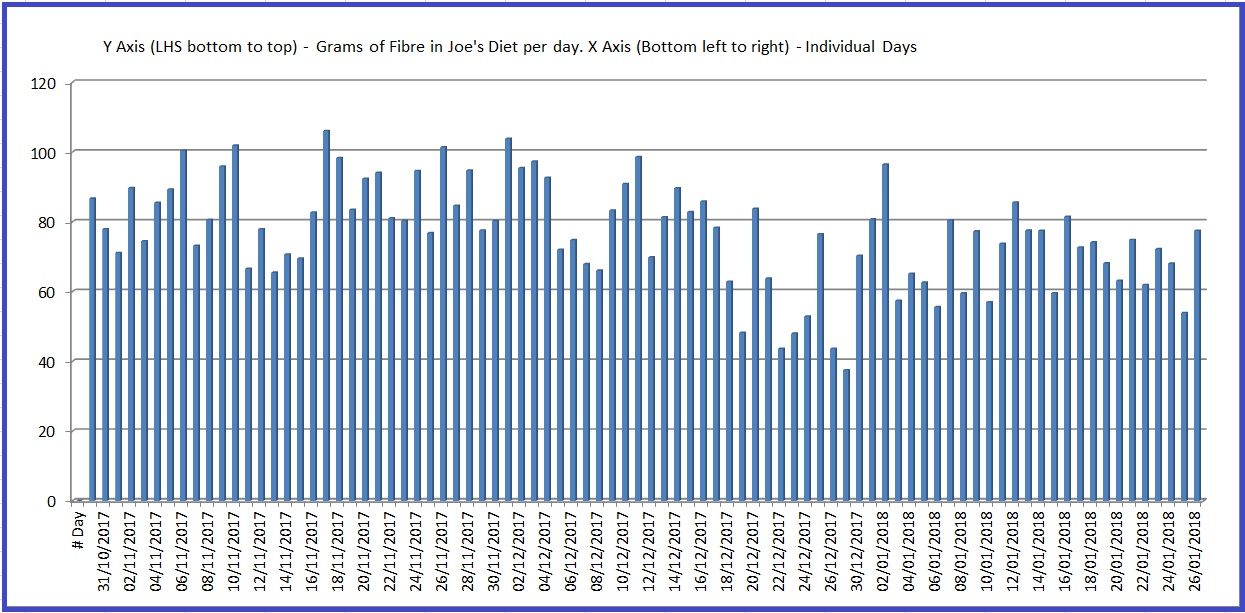
One of my clients mentioned some concern about the fact that he is pooing more since starting his WFPB programme than he did when he was on his previous diet.
If this is something that also concerns you, then read on…
It is quite normal to visit the loo more when eating whole plant foods because your GI (gastrointestinal) tract is working as it should. This is largely because of the extra soluble and insoluble fibre that you are eating. Whilst fibre is not technically an essential nutrient (because you can survive without it), there are huge benefits for having high levels of fibre in your diet. And remember, there is ZERO fibre in animal foods. It ALL comes from plant foods.
Soluble fibre does dissolve in water. It forms a gel-like material. It can help lower blood cholesterol and glucose levels by minimising glucose and lipid absorption (any of a class of organic compounds that are fatty acids or their derivatives). It also makes you feel more satiated by blunting the postprandial (post-meal) blood glucose response – this allows you to last longer without getting hungry.
Insoluble fibre (including cellulose, hemicelluloses and lignindoes – the structural parts of plant cell walls) does not dissolve in water. It is really important for the health of the billions of “good” bacteria that live in your colon (the large intestine). These little chaps are vital for optimal intestinal health and do not do well on a meat-rich diet. Insoluble fibre also bulks out the material and aids smooth passage through the intestines – thereby helping to prevent such problems as constipation, haemorrhoids and irregular-shaped faeces. You might also note that it generally makes your poo float – a good sign!

Both types of fibre are thus beneficial to the body. But how much fibre should we aim to get in our diet?
Dr Greger suggests that we should aim for a minimum of 25 grams a day of soluble fibre (concentrated in beans, oats, nuts, and berries) and a minimum of 47 grams a day of insoluble fibre (concentrated in whole grains – wheat bran, corn bran, rice bran, the skins of fruits and vegetables, nuts, seeds, beans).
For your information, this is my consumption of fibre over the past 3 months:

This sort of data on a wide range of nutritional markers is available to all my clients when they participate in one of my WFPB programmes.
“The under-consumption of unrefined plant foods in our diet has resulted in a low fiber intake. The standard American diet is highly lacking in fiber. Sadly, one-third of preschoolers have been found to be constipated. Nine servings of fruits and vegetables a day at a minimum are recommended. Fiber causes an increase in stool size, which has been associated with a decreased cancer risk, specifically colon cancer, as well as lower risk of ulcerative colitis, Crohn’s disease, appendicitis, constipation, and diverticulitis.
A plant-based diet high in fiber can flush excess estrogen and cholesterol out of the system. This may help explain why high fiber intake is associated with reduced breast cancer risk. The target minimum fecal output is about half a pound a day. The amount of time it takes food to travel through the body perhaps ideally should be 24-36 hours. And at the same fiber intake, antioxidant rich foods reduce inflammation better than less nutrient-dense foods.
Foods relatively rich in fiber include: dates (date sugar has fiber since it’s just powdered dates), chia seeds, flax seeds, veggie chicken, flaked coconut, dark green leafy vegetables, and beans.
It used to be thought that fiber just passed through us with no effect other than providing bulk. However, it is now known that metabolites are actively produced by our gut bacteria that eat fiber. These compounds may have anti-inflammatory, anti-cancer, anti-obesity and blood sugar control effects. Fiber has also been found to bind nutrients, so if you juice, you are losing more than just the fiber. Smoothies on the other hand allows for greater absorption of nutrients, although depending on what is in the smoothie, disrupting the fiber may lead to a higher insulin spike.
High fiber diets may also reduce the risk of stroke, high cholesterol and potentially heart disease.
Fiber intake also has possible benefits for hiatal hernia, brain loss, kidney stones, COPD, Parkinson’s disease, diabetes, weight loss, improved immunity, and ultimately increased longevity, possibly because fiber may help mimic some of the benefits of calorie restriction.”